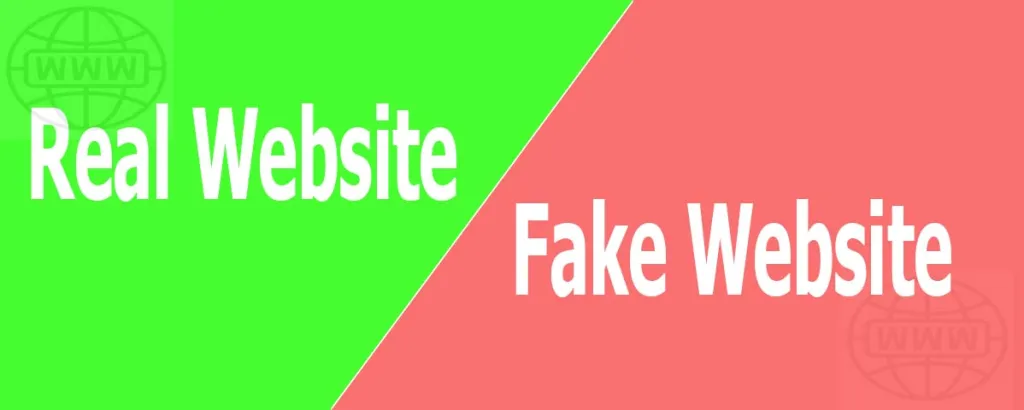
Nowadays, with so many websites and an increasing reliance on the Internet for information exchange, financial transactions, business, etc., the risks have increased at the same time. Websites are the foundation of all this activity, so it is even more important to identify a legit website on the internet to protect ourselves from internet fraud. Every year, one in ten adults falls victim to a fraudulent website that costs them a fortune. With many companies operating through individual accounts on social media platforms, account takeover fraud tops the list of the year with an increase of about 72 percent.
How to identify if a website is fake or fraudulent?
URL validation:
Most websites try to imitate the original website to trick visitors into making mistakes. So most likely the URLs of these websites are similarly framed, but with only a slight variation, which can be seen upon careful inspection. These minor differences can be difficult to spot, but there are many website reputation checks online that can be used to identify the correct website. Typos, misuse of words in URLs, etc. are some of the easily identifiable fraudulent websites.
Extended Validation is one of the highest levels of validation displayed in the address bar. For example, a green address bar with a lock before the URL confirms EV certification, which is proof of the website’s identity.
These links are often inserted into phishing emails through a hyperlink that hides the URLs of the direct sites. In addition, these types of messages contain an inappropriate email domain name, an incorrect email subject and text, and urgent and time-bound actions or requests in the email. Therefore, it is always recommended to scan URLs of hyperlinks from unrecognized users before clicking on them. In addition, such fake website URLs have letters without spaces, words are misaligned with the original domain name and subdomain name of the URL. That’s why it’s important to look and think carefully before clicking a link in an email or web page.
Existence of SSL Certificates:
An SSL certificate gives a lot of authenticity to website connections. An SSL certificate provides HTTPS protocols to websites. HTTPS provides much stronger encryption and is more secure than plain text HTTP protocols. The data transmission between the browser and the site’s servers is thus secured with more efficient and up-to-date encryption. SSL certificate providers should also be trusted. All websites like banking portals, online shopping, social media, etc. practically have SSL certificate. The security lock icon quickly identifies an SSL certificate just before the URL or from the “https: //” characters at the beginning of URLs. Websites that use SSL certificates are a good confirmation of the legitimacy of the website.
View website certificate information:
To identify the legitimate SSL or to get more information about the SSL certificate, the SSL certificate for any website can be viewed by clicking the lock icon and clicking the certificate is a valid option as below. This will take you to the certificate information. The tabs in the certificate window contain various information such as information issued by and given to the parties, validation dates, organization name, country/region name, etc. Therefore, using an SSL
certificate can have many benefits when used correctly.
The information available depends on the type of certificate, such as Domain Validation Certificate (DV), Organization Validation Certificate (OV), and the strongest Extended Validation (EV) certificate. DV SSL only displays domain information. The OV certificate contains much more information such as company name, country, state and city. The EV certificate adds the company name to the site information and many other details to the subject field, along with the company name, country, state, and city.
Some signals from within the site:
The site’s privacy policy is important. All reputable websites have attached privacy policies that inform their users how their information is protected and which third parties are linked to the website and how information is shared between them.









